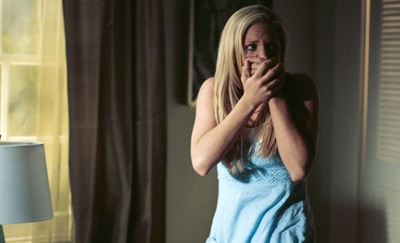Box Office Special - Prom Night Doubles Down
This week saw no new horror films open in wide release, although a handful of theaters did play host to some lascivious zombies. This lack of fresh fodder for horror hounds everywhere merely translated into a second strong, if not overwhelming, showing for last weekend's whipping post, Prom Night. In it's second weekend, and up against some stiff competition from a new Judd Apatow film and a Pacino turn, the little PG-13 horror film that could only dropped two spots, and placed a solid third with just over $9 mil.
Of course, $9 mil is something of a drop-off from the $22 million that Prom Night did on opening weekend, but the 56% drop-off was actually better than Cloverfield did in its second week; a week in which one of the better PG-13 horror films was beaten by Meet the Spartans and 27 Dresses.
Last week, I talked a little bit about some of the trends that we can draw from the business done by the mainstream horror releases of 2008. This week, with Prom Night showing that it might have some staying power, it's time to look at the early validation of the idea that horror film's are an easy buck. Looking at the numbers, we can only conclude, for the time being, that the conventional wisdom is pretty on point.

Don't look so shocked. Prom Night was budgeted at $20 million, a figure it actually surpassed during its initial weekend. The five films for which we have budget data have posted a mean domestic ROI of 195%. That average is dragged down considerably by Untraceable, which was nigh on unwatchable, and consequently faired quite poorly in the US. But if we include foreign numbers, which I've declined to do for the time being, even that piece of crap turned a profit. Of course, these numbers may not include marketing budgets, but the revenues themselves are only box office returns. Once these films leave theaters, they don't stop making money. Which means that Prom Night could prove a nice cash cow for Sony Pictures well into the next decade.

